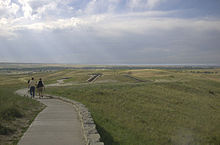There is a very interesting article on Snopes...which some say is a left-leaning site. I am borrowing a few of the Myths they have dispelled:
MYTH: The Confederate Battle Flag represented the Southern Nation.
FACT: Not true. While the Southern Battle flag was carried into battle, the Southern Nation had 3 different National flags during the course of the war.
The First National flag was changed due to a resemblance of the US flag.
The Second National flag was subsequently modified due to the similarity to a flag of truce.
The Third National flag was the adopted flag of the Confederacy.
The Confederate Battle Flag was never a National Flag of the Confederacy. It was carried into battle by several armies such as the Army of Northern Virginia and the Army of Tennessee. Was also used as a Naval Jack by the Confederate Navy.
MYTH: The Confederate Battle Flag is known as the “Stars & Bars.”
FACT: A common misconception. The First National Confederate Flag is correctly known as the “Stars & Bars.” The Confederate Battle Flag is known as the “Southern Cross.”
MYTH: The Confederate Flags are an authorized symbol of Aryan, KKK and hate groups.
FACT: Quite the contrary. These despicable organizations such as the KKK and Aryans have taken a hallowed piece of history, and have plagued good Southern folks and the memories of fine Confederate Soldiers that fought under the flag with their perverse agenda. IN NO WAY does the Confederate Flag represent hate or violence. Heritage groups such as the [Sons of Confederate Veterans] battle daily the damage done to a proud nation by these hate groups. The SCV denounces all hate groups, and pridefully boast HERITAGE – NOT HATE.
MYTH: The Confederate Battle Flag represents racism today.
FACT: The Confederate Battle Flag today finds itself in the center of much controversy and hoopla going on in several states. The cry to take this flag down is unjustified. It is very important to keep in mind that the Confederate Battle Flag was simply just that. A battle flag. It was never even a National flag, so how could it have flown over a slave nation or represented slavery or racism? This myth is continued by lack of education and ignorance. Those that vilify the Confederate Battle Flag are very confused about history and have jumped upon a bandwagon with loose wheels.
PLEASE READ THIS CAREFULLY:
Herein lies the problem with symbols: They have no inherent meanings; they have only whatever meanings people choose to read into them, and different people can associate very different meanings with the same symbol. The Confederate battle flag is now regarded in many different ways — as a symbol of slavery, as a rallying banner for white supremacists, as a quaint historical artifact, as a memorial to those who fought gallantly and bravely (even if it was in the service of cause no longer considered virtuous), as a general emblem of rebellion against authority, as a benign display of regional pride, or even as a fond reminder of two “good ol’ boys” who were “never meanin’ no harm.”
It is true that for several decades after the Civil War, the Confederate battle flag was not widely perceived as a negative symbol. Its use was largely limited to historical ceremonies associated with veterans’ events and war memorials; the flag did not become the symbol most prominently associated with the Confederacy until several decades after the Civil War ended, and it was not widely perceived as a politically polarizing symbol until it was appropriated by segregationist politicians and groups in the middle of the twentieth century.
However, the fact remains that the Confederate battle flag has long since become the pre-eminent symbol of the Confederacy and what it stood for, and across the span of several decades it has been co-opted by segregationist and white supremacist groups such as the Dixiecrats, the KKK, and the Aryan Nation. Certainly one can be a racist or a white supremacist without associating himself with “Southern Pride” or a Confederate battle flag, but for better or worse, no one group is any more “authorized” to use the Confederate battle flag as their symbol than another: the Confederate government and its military forces ceased to exist 150 years ago and therefore have no say or control over the usage of the Southern Cross.
NOTE FROM GINGER: I am appalled that the Supreme in Oklahoma has ordered the removal of the Ten Commandments from their state capital. The commandments, although germaine to the Christian religion, serve as rules by which to live no matter which religion you follow. If you are oppressed or offended by "do not kill or honor they mother and father," then you may be part of the reason that people are crying for the removal of statues and flags that Southern people hold dear. If this is a sign of the times, I fear what is yet to come. I urge you to read the entire article I've linked to. Be informed before you beat your drum.
Read more at http://m.snopes.com/2015/06/28/confederate-flag-history/#hYH9WFEuHliK9oZK.99
























